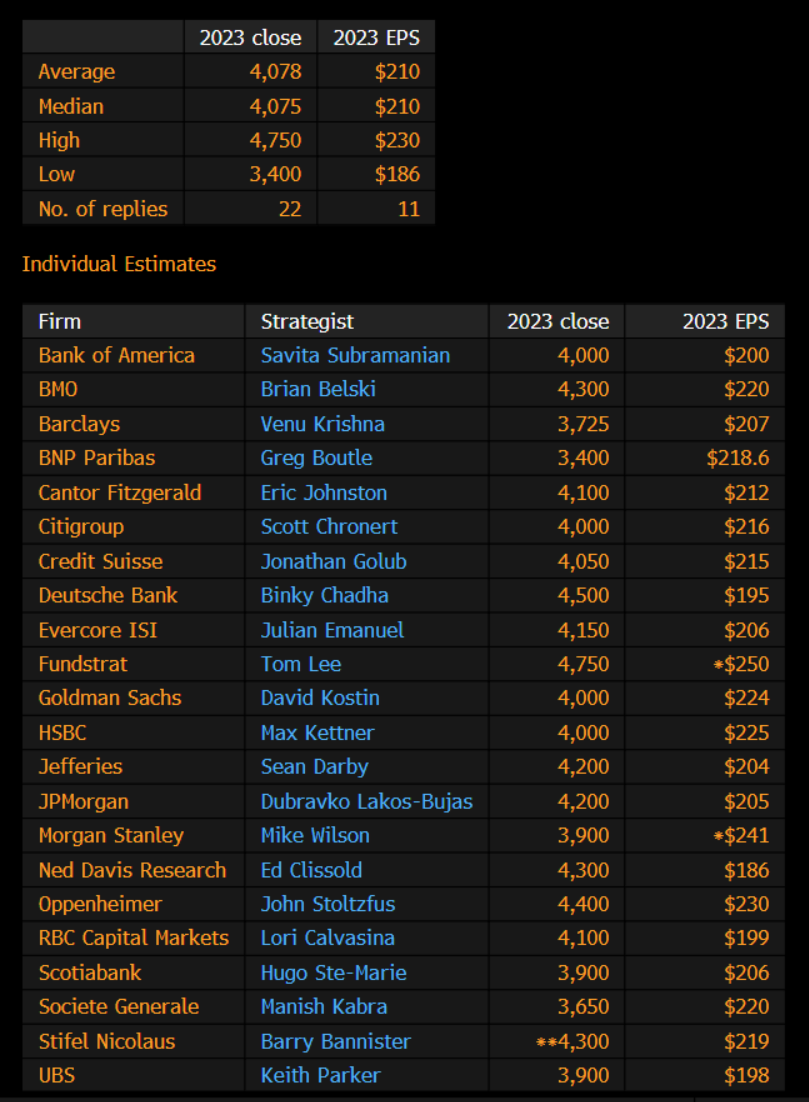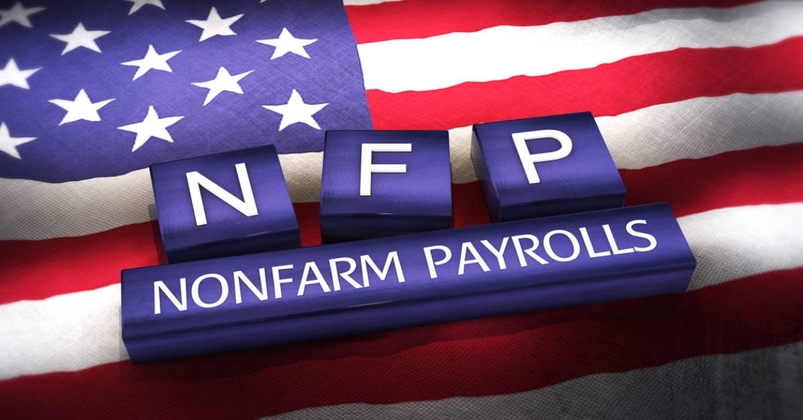- English (UK)
Analysis
TA vs FA - Do price forecasts offer information value for traders?

For starters let’s revisit the 2023-year-end call on the S&P500 made back in Dec 2022, where the median forecast was 4075 – 17% below the actual closing level in Dec 2023 of 4769.83. There was only one analyst – Tom Lee (Fundstrat) - who was anywhere near the final closing level, and at the time he was widely ridiculed for his uber-bullish call.

We can also take the early forecast by Soc Gen, who had a 3650 call on the S&P500 by year-end. This proved to be wildly incorrect, but the call was ultimately revised higher throughout the year, and after tweaking the forecast to 4750 on 9 November, now looks like a hero.
I'm not in the business of mocking bad calls, and understand most analysts are loath to make these forecasts but are required to do so. It's clearly very hard to do, and requires some degree of luck, where a lot needs to go right to be on the money.
The math behind an index price target
The basic logic for creating a year-end forecast is to firstly model a forward price to earnings (P/E) multiple that is deemed to be fair – we do this by forecasting factors such as where US bond yields will be at year-end, as well as the potential level of ERP (equity risk premium).
We then need to model our earnings-per-share (EPS) assumptions for year-end. In 2023 the median estimate was for S&P500 earnings at $210, which actually wasn’t terrible a call.
We can then multiply our EPS forecast by the fair forward PE multiple and you have a price target. As it stands, the median fair future PE ratio is 20.7x and the 2024 EPS assumption at $232.2 – so the median consensus is around 4813.
Sound complicated?
It certainly needs some study, but in many ways, this is the crux of many fundamental models which attempt to model a ‘fair value’ and hope the market can move towards that price over time.
Perhaps the buy-and-hold investor crowd can find some value from targets, but then you have a plethora of sell-side analysts to follow – choosing one often plays into one’s own directional bias, where the thesis for getting to that endpoint reinforces one’s own belief systems. Some will also consider the analyst's pedigree and form in prior years and feel they are reading the tea leaves well.
Forecasts can also be useful for multi-asset investors who look at expected returns. Where expected returns often dictate one’s portfolio composition and whether they’re underweight or overweight a specific asset class or sector.
Where these models typically fall down is that they rarely account for human behaviour, emotion and structural flows.
For traders, the analyst’s thesis (behind the forecast) can be helpful, as some of the trends and risks expressed can help us identify the future trading environment and event risks of note. However, I don’t know of any trader who has made money using forecasts.
Not only is a year an eternity for traders, but it’s the price (P) element of the PE ratio that has driven equity markets through 2023. Where multiple expansion (a rising PE ratio without earnings growth) has been driven by funds happy to pay an ever-higher price, with active managers chasing returns, a more compelling perception of central bank liquidity, as well as bullish structural flows derived from options dealers hedging their gamma exposure, volatility-targeting funds, and CTAs (Commodity Trading Advisors) reacting to the one-way rally in price.
Technical vs fundamental analysis?
This is where technical analysis (TA) is often far superior for traders, as the principle is premised on reacting to flows and the aggregation of all decisions being made within a timeframe.
While TA is a broad practice, at its heart it’s less about prediction, but offers key insights and understanding of how market participants feel at any one time. TA and price action is the best barometer of sentiment, and it helps us understand the distribution of outcomes for price.
We can partly explain much of the rally in US equity from late October on the fall in US real rates, increased rate cut expectations and resilient US growth dynamics. But what really propelled the various equity indices to see some incredible returns was falling realized volatility, options hedging flows – made even more prevalent through the rise and rise of 0DTE options – and CTAs going max long in S&P500 and NAS100 futures.
Few fundamental models account for this.
At the end of the day, it's what works for you, and if you’ve made money following price targets then ignore everything I’ve said – it’s simply my observations. Yet, while a lot of these flows are quite opaque, we can see them front and centre in the price action – that – in so many ways it tells you all you need to know.
Related articles
The material provided here has not been prepared in accordance with legal requirements designed to promote the independence of investment research and as such is considered to be a marketing communication. Whilst it is not subject to any prohibition on dealing ahead of the dissemination of investment research we will not seek to take any advantage before providing it to our clients.
Pepperstone doesn’t represent that the material provided here is accurate, current or complete, and therefore shouldn’t be relied upon as such. The information, whether from a third party or not, isn’t to be considered as a recommendation; or an offer to buy or sell; or the solicitation of an offer to buy or sell any security, financial product or instrument; or to participate in any particular trading strategy. It does not take into account readers’ financial situation or investment objectives. We advise any readers of this content to seek their own advice. Without the approval of Pepperstone, reproduction or redistribution of this information isn’t permitted.

.jpg?height=420)